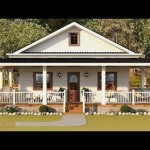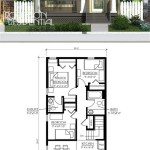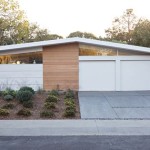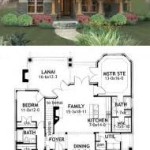Coastal Elevated House Plans are architectural designs for houses that are elevated above the ground level to protect them from flooding and storm surges. These plans are becoming increasingly popular in coastal areas due to the rising sea levels and the increasing frequency of severe weather events.
Elevated houses can be constructed on piers, stilts, or a combination of both. The height of the elevation will depend on the flood risk in the area. In some cases, houses may be elevated as high as 10 feet or more above the ground level.
The main body of this article will discuss the different types of coastal elevated house plans, the advantages and disadvantages of each type, and the factors to consider when choosing a plan.
Important Points About Coastal Elevated House Plans
- Protect from flooding and storm surges
- Elevated on piers, stilts, or both
- Height depends on flood risk
- Different types of plans available
- Advantages: flood protection, views
- Disadvantages: cost, maintenance
- Factors to consider: flood risk, budget
- Professional design and construction recommended
Coastal elevated house plans offer a number of advantages over traditional houses, including protection from flooding and storm surges, panoramic views, and improved air circulation. However, they can also be more expensive to build and maintain. It is important to weigh the advantages and disadvantages carefully before deciding whether a coastal elevated house plan is right for you.
Protect from flooding and storm surges
Coastal elevated house plans offer superior protection from flooding and storm surges compared to traditional houses built at ground level. By elevating the house above the ground, it is less likely to be damaged or destroyed by floodwaters or storm surges.
- Reduced risk of flooding: When floodwaters rise, they can enter a house through doors, windows, or cracks in the foundation. Elevated houses are less likely to experience flooding because the floodwaters cannot reach the living space.
For example, during Hurricane Katrina in 2005, many houses in New Orleans were flooded because they were built at ground level. However, houses that were elevated on piers or stilts were much less likely to be flooded.
- Protection from storm surges: Storm surges are walls of water that can be generated by hurricanes and other storms. Storm surges can cause extensive damage to coastal communities, including flooding, erosion, and structural damage. Elevated houses are less likely to be damaged by storm surges because they are not located directly on the ground.
For example, during Hurricane Sandy in 2012, many houses in New York City and New Jersey were damaged by storm surges. However, houses that were elevated on piers or stilts were much less likely to be damaged.
- Reduced risk of structural damage: Flooding and storm surges can cause significant structural damage to houses. The weight of the water can cause walls to collapse and roofs to cave in. Elevated houses are less likely to experience structural damage because they are not directly exposed to the floodwaters or storm surges.
For example, during the Great Galveston Hurricane of 1900, many houses in Galveston, Texas were destroyed by the storm surges. However, houses that were elevated on piers or stilts were much less likely to be destroyed.
- Reduced risk of mold and mildew: Flooding and storm surges can also lead to the growth of mold and mildew in houses. Mold and mildew can cause health problems and can damage the structure of the house. Elevated houses are less likely to experience mold and mildew growth because they are not located directly on the ground and are better ventilated.
Overall, coastal elevated house plans offer a number of advantages over traditional houses when it comes to protecting from flooding and storm surges.
Elevated on piers, stilts, or both
Coastal elevated house plans can be elevated on piers, stilts, or a combination of both. The type of elevation that is used will depend on the flood risk in the area, the soil conditions, and the desired height of the house.
- Piers
Piers are vertical supports that are driven into the ground below the house. They are typically made of concrete or steel. Piers are a good option for houses that are located in areas with a high flood risk or in areas with soft soil conditions. Piers can be used to elevate houses to a height of 10 feet or more above the ground level.
- Stilts
Stilts are similar to piers, but they are typically made of wood. Stilts are driven into the ground below the house and then the house is built on top of them. Stilts are a good option for houses that are located in areas with a moderate flood risk or in areas with firm soil conditions. Stilts can be used to elevate houses to a height of about 5 feet above the ground level.
- Combination of piers and stilts
Some coastal elevated house plans use a combination of piers and stilts. This type of elevation is typically used for houses that are located in areas with a high flood risk or in areas with soft soil conditions. The piers are used to support the weight of the house, while the stilts are used to elevate the house to a higher level.
- Other types of elevation
In addition to piers and stilts, there are other types of elevation that can be used for coastal elevated house plans. These include:
- CRAWL SPACE: A crawl space is a small space beneath the house that is enclosed by a foundation. Crawl spaces can be used to elevate houses to a height of about 2 feet above the ground level.
- BASEMENT: A basement is a room that is located below the ground level of the house. Basements can be used to elevate houses to a height of about 8 feet above the ground level.
The type of elevation that is used for a coastal elevated house plan will depend on the specific needs of the homeowner and the site conditions.
Height depends on flood risk
The height of a coastal elevated house plan will depend on the flood risk in the area. The higher the flood risk, the higher the house should be elevated.
- Low flood risk: In areas with a low flood risk, houses may only need to be elevated a few feet above the ground level. This can be achieved using piers, stilts, or a crawl space.
For example, a house in an area with a low flood risk may only need to be elevated 2 feet above the ground level. This can be achieved using a crawl space.
- Moderate flood risk: In areas with a moderate flood risk, houses may need to be elevated to a height of 5 to 8 feet above the ground level. This can be achieved using piers, stilts, or a basement.
For example, a house in an area with a moderate flood risk may need to be elevated 5 feet above the ground level. This can be achieved using stilts.
- High flood risk: In areas with a high flood risk, houses may need to be elevated to a height of 10 feet or more above the ground level. This can be achieved using piers or a combination of piers and stilts.
For example, a house in an area with a high flood risk may need to be elevated 10 feet above the ground level. This can be achieved using piers.
- Extreme flood risk: In areas with an extreme flood risk, houses may need to be elevated to a height of 20 feet or more above the ground level. This can be achieved using piers or a combination of piers and stilts.
For example, a house in an area with an extreme flood risk may need to be elevated 20 feet above the ground level. This can be achieved using a combination of piers and stilts.
It is important to note that the flood risk in an area can change over time. For example, sea levels are rising due to climate change, which is increasing the flood risk in many coastal areas. Therefore, it is important to consider the potential flood risk when choosing the height of your coastal elevated house plan.
Different Types of Plans Available
There are a variety of different types of coastal elevated house plans available, each with its own advantages and disadvantages. The type of plan that is best for you will depend on your specific needs and preferences.
- Single-story plans
Single-story plans are the most common type of coastal elevated house plan. These plans feature all of the living space on one level, which makes them easy to navigate and accessible for people of all ages. Single-story plans are also typically more affordable to build than multi-story plans.
- Multi-story plans
Multi-story plans feature two or more levels of living space. These plans can be more expensive to build than single-story plans, but they can also offer more space and flexibility. Multi-story plans are a good option for families who need more space or who want to have separate living areas for different activities.
- Open-concept plans
Open-concept plans feature a large, open living space that combines the kitchen, dining room, and living room into one area. These plans are popular because they create a spacious and airy feel. Open-concept plans are also a good option for families who like to entertain, as they allow for easy flow between different areas of the house.
- Traditional plans
Traditional plans feature a more formal layout, with separate rooms for the kitchen, dining room, and living room. These plans are often more expensive to build than open-concept plans, but they can also offer more privacy and separation between different areas of the house.
In addition to these basic types of plans, there are also a number of other factors to consider when choosing a coastal elevated house plan, such as the size of the house, the number of bedrooms and bathrooms, and the style of the house. It is important to work with a qualified architect or builder to find a plan that meets your specific needs and preferences.
Advantages: flood protection, views
Coastal elevated house plans offer a number of advantages over traditional houses built at ground level, including superior flood protection and panoramic views.
Flood protection
One of the most important advantages of coastal elevated house plans is the superior flood protection they offer. By elevating the house above the ground level, it is less likely to be damaged or destroyed by floodwaters or storm surges. This is especially important in coastal areas that are prone to flooding, such as those along the Gulf of Mexico and the Atlantic Ocean.
For example, during Hurricane Katrina in 2005, many houses in New Orleans were flooded because they were built at ground level. However, houses that were elevated on piers or stilts were much less likely to be flooded.
Views
Another major advantage of coastal elevated house plans is the panoramic views they offer. By elevating the house above the ground level, homeowners can enjoy unobstructed views of the surrounding area, including the ocean, the beach, and the marsh. This can be a major selling point for coastal properties, as many people are willing to pay a premium for a home with a great view.
For example, a house that is elevated 10 feet above the ground level will have a view that extends for miles in all directions. This can be a major advantage for homeowners who enjoy watching the sunrise and sunset over the ocean or who simply want to enjoy the peace and quiet of the coastal lifestyle.
Overall, coastal elevated house plans offer a number of advantages over traditional houses built at ground level. These advantages include superior flood protection, panoramic views, and improved air circulation. As a result, coastal elevated house plans are becoming increasingly popular in coastal areas around the world.
Disadvantages: cost, maintenance
Coastal elevated house plans also have some disadvantages, including higher costs and increased maintenance requirements.
- Cost
Coastal elevated house plans are typically more expensive to build than traditional houses built at ground level. This is because elevated houses require more materials and labor to construct. The cost of elevating a house will vary depending on the size of the house, the height of the elevation, and the type of elevation system used. For example, a house that is elevated 10 feet above the ground level using piers will be more expensive to build than a house that is elevated 5 feet above the ground level using stilts.
- Maintenance
Coastal elevated house plans also require more maintenance than traditional houses built at ground level. This is because elevated houses are more exposed to the elements, which can cause damage to the exterior of the house and the elevation system. For example, elevated houses are more likely to experience damage from wind, rain, and salt spray. In addition, the elevation system itself will require regular maintenance to ensure that it is safe and secure.
- Insurance
Coastal elevated house plans may also be more expensive to insure than traditional houses built at ground level. This is because elevated houses are considered to be a higher risk for flooding and other damage. As a result, homeowners may need to pay higher insurance premiums for an elevated house.
- Access
Coastal elevated house plans may also be more difficult to access than traditional houses built at ground level. This is because elevated houses require stairs or ramps to access the living space. This can be a challenge for people with mobility issues or for families with young children.
Overall, coastal elevated house plans offer a number of advantages over traditional houses built at ground level. However, it is important to be aware of the potential disadvantages before making a decision about whether to build an elevated house.
Factors to consider: flood risk, budget
When choosing a coastal elevated house plan, there are a number of factors to consider, including the flood risk in the area and your budget.
Flood risk
The flood risk in an area is determined by a number of factors, including the elevation of the land, the proximity to water bodies, and the history of flooding in the area. It is important to research the flood risk in an area before choosing a coastal elevated house plan. This information can be obtained from local government agencies, flood insurance companies, and online resources.
If you are considering building a coastal elevated house in an area with a high flood risk, it is important to choose a plan that will elevate the house to a height that is above the expected flood level. This will help to protect your home from flooding and storm surges.
Budget
The cost of building a coastal elevated house will vary depending on the size of the house, the height of the elevation, and the type of elevation system used. It is important to factor the cost of construction into your budget when choosing a coastal elevated house plan.
If you are on a tight budget, you may want to consider a smaller house or a house that is elevated to a lower height. You may also want to consider using a less expensive type of elevation system, such as stilts or a crawl space.
Overall, it is important to carefully consider the flood risk in an area and your budget when choosing a coastal elevated house plan. By doing so, you can choose a plan that will meet your needs and protect your home from flooding and storm surges.
Professional design and construction recommended
While it is possible to design and build a coastal elevated house plan on your own, it is highly recommended to hire a professional architect and builder to complete the project. This is because coastal elevated house plans are complex structures that require specialized knowledge and expertise to design and build safely and correctly.
- Structural integrity
Coastal elevated house plans must be structurally sound to withstand the forces of wind, rain, and flooding. A professional architect can design a house that is strong enough to withstand these forces and ensure that the house is safe for occupants.
- Flood protection
Coastal elevated house plans must be elevated to a height that is above the expected flood level in the area. A professional architect can determine the appropriate elevation for the house based on the flood risk in the area.
- Building codes
Coastal elevated house plans must comply with all applicable building codes. A professional architect can ensure that the house is designed and built in accordance with these codes.
- Energy efficiency
Coastal elevated house plans can be designed to be energy efficient, which can save homeowners money on their energy bills. A professional architect can incorporate energy-efficient features into the design of the house, such as high-performance windows, insulation, and solar panels.
Overall, hiring a professional architect and builder to design and build a coastal elevated house plan is the best way to ensure that the house is safe, durable, and energy efficient.










Related Posts








